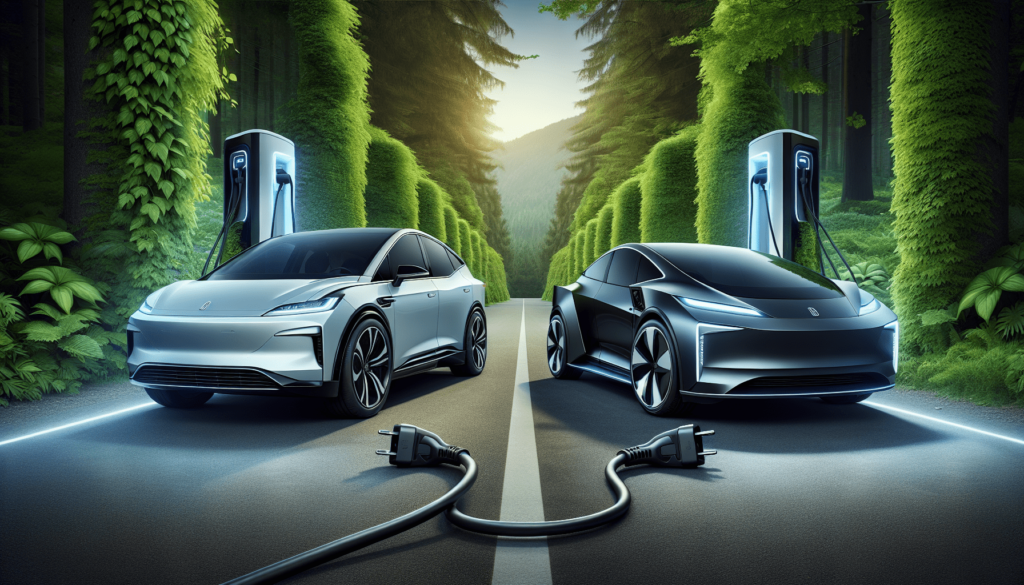Understanding the Distinction: Hybrid vs Fully Electric Vehicles
Share
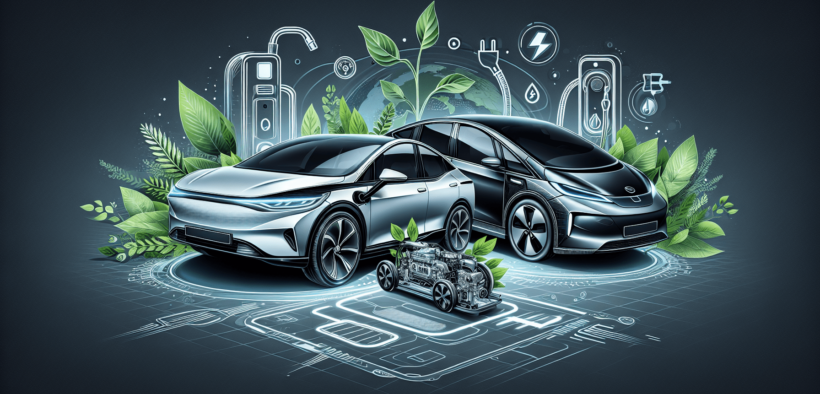
So, you’re curious about the difference between hybrid and fully electric cars, huh? Well, buckle up because we’re about to take a spin through the world of eco-friendly wheels. Hybrid vehicles, as the name suggests, blend the best of both worlds by combining an internal combustion engine with an electric motor. On the other hand, fully electric vehicles rely solely on electricity to get from point A to point B. But what does this mean for performance, range, and the environment? Let’s break it down and decipher the distinction between these two innovative modes of transportation.
Powertrain
Hybrid Vehicles
Hybrid vehicles are equipped with a powertrain that combines both an internal combustion engine (ICE) and an electric motor. These vehicles have the ability to run on either gasoline or electricity, or a combination of both. The powertrain consists of a gasoline engine, an electric motor, and a battery pack that stores energy. The gasoline engine is responsible for powering the vehicle at high speeds or when additional power is required, while the electric motor is used for lower speeds and during acceleration. The battery pack in hybrid vehicles is smaller compared to fully electric vehicles, as it primarily serves to support the electric motor rather than solely powering the vehicle.
Fully Electric Vehicles
On the other hand, fully electric vehicles, as the name suggests, solely rely on electricity to operate. They are powered by an electric motor and are not equipped with an internal combustion engine. Instead of using gasoline, these vehicles are charged using electricity from an external source, such as a charging station or a home outlet. Fully electric vehicles do not have a gasoline engine and therefore do not produce any tailpipe emissions. They have a larger battery pack compared to hybrid vehicles, which allows them to store more energy and provide a longer driving range.
Fuel Source
Hybrid Vehicles
Hybrid vehicles use a combination of gasoline and electricity as their fuel source. They have an internal combustion engine that runs on gasoline, similar to traditional vehicles. This allows them to offer the convenience of refueling at gas stations and eliminates the range anxiety associated with fully electric vehicles. The gasoline engine in hybrid vehicles is powered by a fuel tank, which needs to be refueled regularly. The electric motor, on the other hand, is powered by the battery pack and does not require refueling from an external source.
Fully Electric Vehicles
Fully electric vehicles rely solely on electricity as their fuel source. They do not have an internal combustion engine and therefore do not require gasoline. Instead, they need to be charged using electricity from an external source. This can be done through various charging options, such as public charging stations, home charging stations, or even portable chargers. The absence of a reliance on gasoline allows fully electric vehicles to produce zero tailpipe emissions, providing a cleaner and more environmentally friendly mode of transportation.
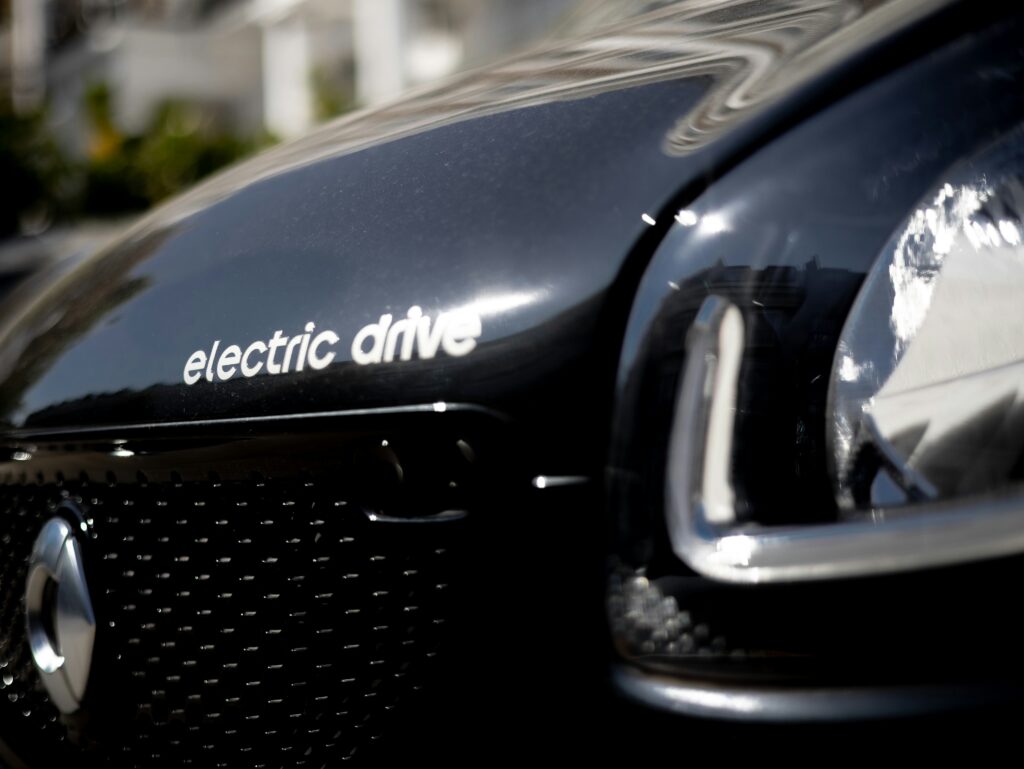
Battery Size
Hybrid Vehicles
Hybrid vehicles have a smaller battery pack compared to fully electric vehicles. The battery pack in hybrids is designed to support the electric motor and provide additional power when needed. It is typically smaller in size and capacity, as it does not solely power the vehicle. The smaller battery size allows hybrids to maintain a balance between electric and gasoline power, resulting in a more efficient and flexible driving experience.
Fully Electric Vehicles
Fully electric vehicles are equipped with a larger battery pack compared to hybrid vehicles. The battery pack is responsible for storing energy that powers the electric motor. The larger size allows fully electric vehicles to provide a longer driving range and a more extended period of electric-only operation. The capacity of the battery pack directly affects the range the vehicle can travel on a single charge. Advancements in battery technology have led to improvements in range and charging times for fully electric vehicles, making them a viable option for everyday driving.
Range
Hybrid Vehicles
The driving range of hybrid vehicles is primarily determined by the capacity of the fuel tank and the efficiency of the internal combustion engine. As hybrid vehicles can switch between using gasoline and electricity, the range can vary depending on driving conditions and the use of electric power. Generally, hybrid vehicles can achieve a similar range to traditional gasoline-powered vehicles, as they have the ability to rely on the gasoline engine when needed. This eliminates range anxiety and allows drivers to travel longer distances without the need for frequent refueling.
Fully Electric Vehicles
The range of fully electric vehicles is determined by the capacity of the battery pack and the efficiency of the electric motor. With advancements in battery technology, the range of fully electric vehicles has significantly improved over recent years. However, it is important to note that the range of electric vehicles can still vary depending on factors such as driving style, terrain, and the use of auxiliary features like heating or air conditioning. While fully electric vehicles generally have a shorter range compared to traditional vehicles, they offer the advantage of producing zero tailpipe emissions.
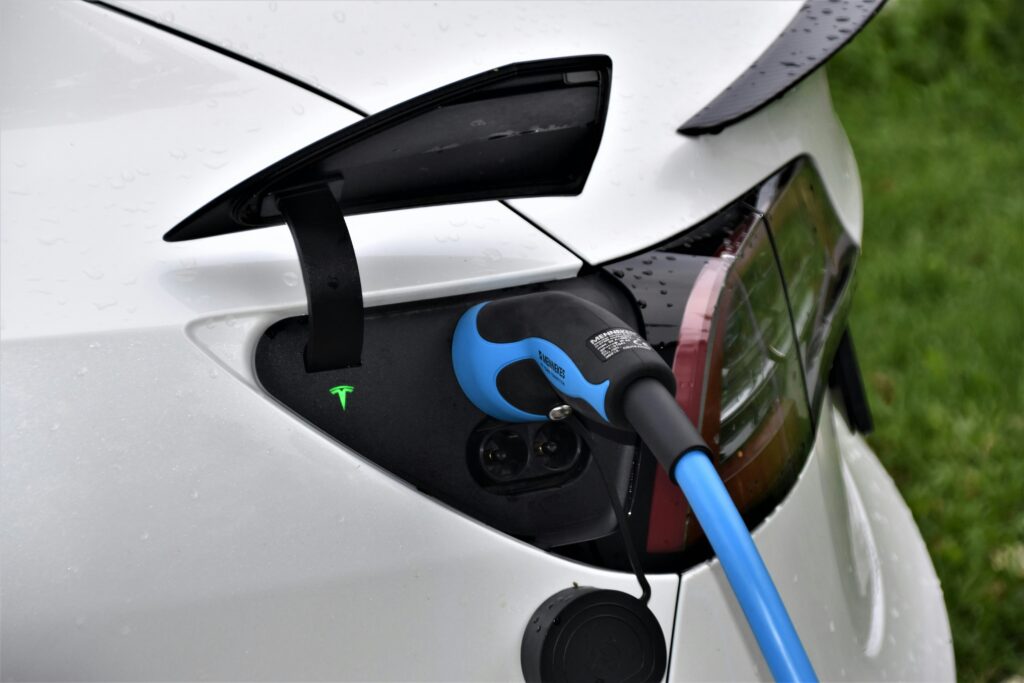
Charging
Hybrid Vehicles
Hybrid vehicles do not require external charging, as they rely on the internal combustion engine to generate electricity for the battery pack. The battery is charged through regenerative braking, which converts kinetic energy into electrical energy, and through excess power generated by the gasoline engine. The charging process is automatic and does not require any user intervention. This makes hybrid vehicles convenient for drivers who do not have access to charging infrastructure or prefer not to rely solely on electricity for their daily commute.
Fully Electric Vehicles
Fully electric vehicles require external charging to replenish the energy in the battery pack. There are different types of charging options available for electric vehicles, ranging from slow charging to fast charging. Slow charging can be done using a standard home outlet, but it is the slowest charging option. Fast charging can be done using dedicated charging stations, and it significantly reduces the charging time. Rapid charging is another option, offering an even faster charging time but requires specific infrastructure. The availability of charging infrastructure can vary by location, which may impact the convenience and practicality of owning a fully electric vehicle.
Emissions
Hybrid Vehicles
Hybrid vehicles produce lower emissions compared to traditional internal combustion engine vehicles. While they still rely on a gasoline engine, the electric motor in hybrid vehicles helps to reduce fuel consumption and emissions. The electric motor assists the gasoline engine during acceleration or at low speeds, reducing the workload on the engine and resulting in lower emissions. Additionally, the regenerative braking system in hybrid vehicles converts kinetic energy into electrical energy, further improving efficiency and reducing emissions.
Fully Electric Vehicles
Fully electric vehicles produce no tailpipe emissions, making them a much cleaner and environmentally friendly option compared to traditional gasoline-powered vehicles. Since they rely solely on electricity, there are no emissions produced during operation. However, it is worth noting that the emissions associated with electric vehicles come from the electricity generation process. If the electricity used to charge electric vehicles is generated from renewable sources, such as solar or wind, the overall emissions associated with electric vehicles can be significantly reduced.
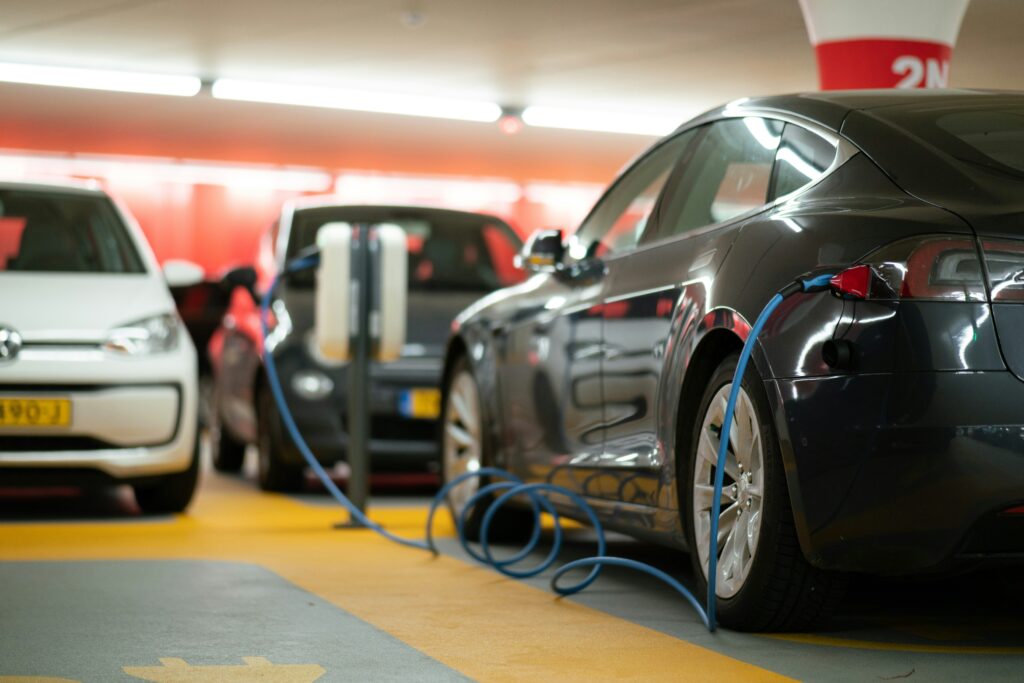
Performance
Hybrid Vehicles
Hybrid vehicles offer a balance between fuel efficiency and performance. The combination of an internal combustion engine and an electric motor provides additional power when needed, resulting in improved acceleration and overall performance compared to traditional vehicles equipped with only an internal combustion engine. The electric motor’s instant torque delivery also contributes to the responsive acceleration of hybrid vehicles. However, it is important to note that hybrid vehicles may not match the performance of fully electric vehicles in terms of acceleration and top speed.
Fully Electric Vehicles
Fully electric vehicles offer excellent acceleration and performance due to the nature of electric motors. Electric motors deliver instant torque, providing smooth and quick acceleration from a standstill. The absence of gears in electric vehicles also contributes to a seamless and smooth driving experience. While electric vehicles can provide impressive performance, it is worth noting that performance may vary depending on the specific model and battery pack capacity. Some fully electric vehicles are designed for efficiency and range rather than outright performance.
Cost
Hybrid Vehicles
Hybrid vehicles generally have a lower upfront cost compared to fully electric vehicles. This is primarily due to the smaller battery pack and the presence of an internal combustion engine in hybrids, which reduces the manufacturing cost. Additionally, hybrid vehicles do not require external charging infrastructure, eliminating the need for additional expenses. However, it is important to consider the long-term costs of owning a hybrid vehicle, such as fuel consumption and maintenance. While hybrids offer improved fuel efficiency, the cost of gasoline can still be a significant factor to consider.
Fully Electric Vehicles
Fully electric vehicles usually have a higher upfront cost compared to hybrid vehicles. This is mainly due to the larger battery pack and the higher manufacturing costs associated with electric vehicle technology. The cost of batteries has been decreasing over time, resulting in a gradual reduction in the price of electric vehicles. Additionally, fully electric vehicles offer lower operational costs compared to traditional gasoline-powered vehicles, as the cost of electricity is generally lower than gasoline. Over time, the savings in fuel and maintenance costs can help offset the higher initial purchase price of electric vehicles.
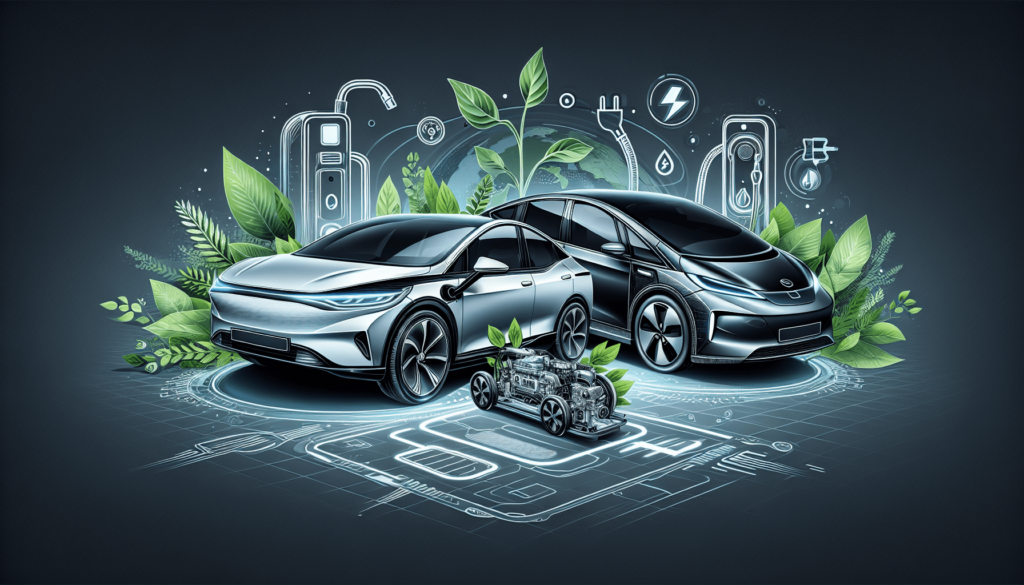
Infrastructure
Hybrid Vehicles
Hybrid vehicles do not require any specific charging infrastructure, as they rely on the internal combustion engine for power. They can be refueled at any gasoline station, making them convenient for drivers who do not have access to charging infrastructure or those who frequently travel long distances. Hybrid vehicles offer the flexibility of being able to switch between gasoline and electricity without relying solely on charging infrastructure.
Fully Electric Vehicles
Fully electric vehicles require a charging infrastructure to support their operation. This includes public charging stations, home charging stations, and rapid charging stations. The availability of charging infrastructure can vary depending on location, which may impact the practicality of owning a fully electric vehicle. However, charging infrastructure is rapidly expanding, and more charging stations are being installed in public spaces, parking lots, and along highways. Home charging stations also provide convenience for electric vehicle owners, allowing them to charge their vehicles overnight.
Market Availability
Hybrid Vehicles
Hybrid vehicles have been on the market for several years and are readily available from various automotive manufacturers. They have gained popularity due to their improved fuel efficiency and reduced emissions compared to traditional vehicles. Hybrid models are offered in different segments, ranging from compact cars to SUVs, providing options for consumers with varied needs. The availability and variety of hybrid vehicles have increased over time, making them a viable option for those looking to reduce their carbon footprint without fully transitioning to electric vehicles.
Fully Electric Vehicles
Fully electric vehicles have experienced significant growth in the market over the past decade. While they were initially limited to a few models with short ranges, advancements in battery technology have led to an increase in the availability and variety of electric vehicles. Many major automotive manufacturers now offer fully electric models, ranging from compact cars to luxury SUVs. As governments worldwide place an emphasis on reducing emissions and transitioning to renewable energy, the market availability of fully electric vehicles is expected to continue expanding.
